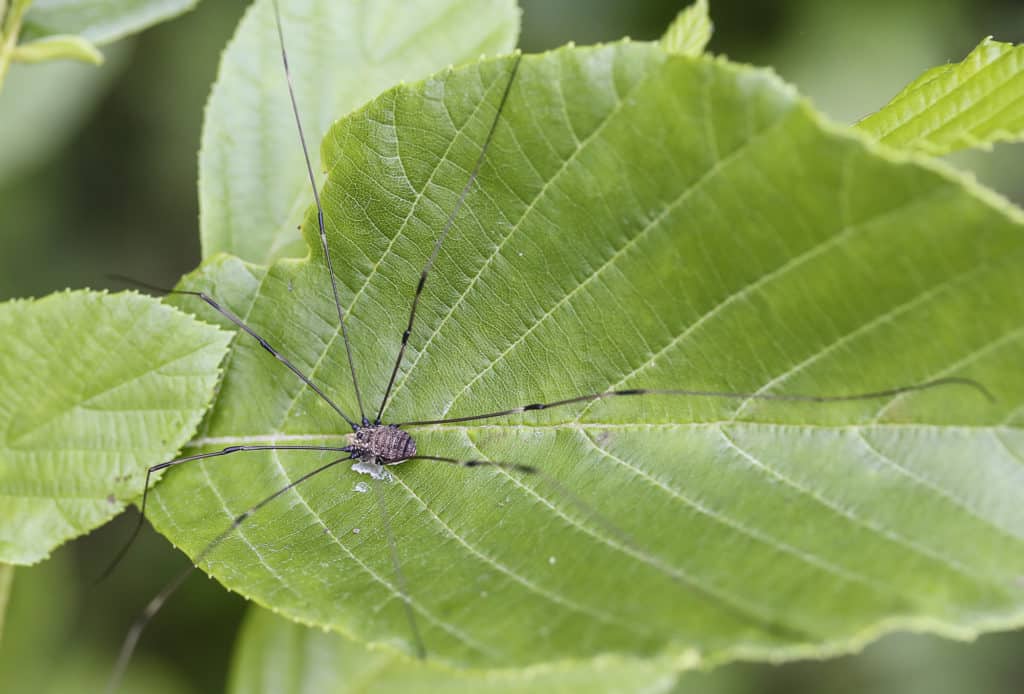Creature Feature

Dispelling a Daddy Long-Legs Myth
By Wayne Bierbaum
Although I do like spiders as an animal, I do not like them being on me. During a botany field trip in college, I was walking through water in Florida’s Fakahatchee Strand State Preserve and while looking down to avoid the water moccasins, I walked through the web of a golden orb spider also known as a banana spider.
The spider got trapped on the back of my neck and it was a huge spider, the body alone was almost two inches long. I did not panic nor did I get bitten. Someone in the group helped get it off. But it was an unpleasant encounter.
I recently went on a walk through Anne Arundel County’s Jug Bay Wetlands Sanctuary, looking for emerging frogs along the water’s edge. I noticed that there were many daddy long-legs feeding and resting in most of the bushes. As I was leaning forward to take a picture, I bumped into a branch and several of them fell onto my right arm. I was not worried but was a little creeped out as they started walking up my arm at an increasing rate. I was able to brush them off with the camera strap on my left hand.
My mind did go back to something I was told a long time ago, “Daddy long-legs have a very potent venom but their fangs are too little to deliver it.” It turns out it is a myth.
The animal that the saying refers to is the cobweb spider and their venom has been studied and found to be mild. In fact, both cobweb and daddy long-leg spiders do occasionally bite but it is barely noticeable.
Daddy long-legs are an arachnid called harvestmen which are technically not spiders. They are arachnids with eight legs but they do not have divided body parts, do not spin webs and have only two eyes. They eat decaying vegetation, carrion (dead things) and small insects. They have legs that are about 25 times their body size and the male’s legs are longer than the female. When they are grabbed by a leg, the pinching triggers autotomy, the voluntary release of a body part. The lost leg does not regrow and the bug has to learn a different way to walk. Females, when rejecting mating, are known to injure the male and cause him to drop off a leg.
Daddy long-legs are a social animal and can be found in groups of hundreds at certain sites. They prefer moist conditions but can be found in dry areas hiding in protected spots. They prefer to hide during the day and feed mostly at night. The bugs have several hatchings during the year with the largest occurring in the fall at harvest time which gives them their other moniker, harvestmen.
So remember: Daddy long-legs are not poisonous, they rarely bite, they are not spiders but are arachnids, they pop-off a leg to escape enemies or a mean female and are social animals—but can be creepy if they walk up your arm. Lastly, they do not cause any harm and do not need to be targeted with pesticides.
